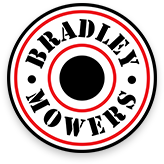When it comes to having an incredible lawn that is lush and green, not all fertilizers are the same. Choosing the right fertilizer is easy when you have a bit of understanding about how it works and what to look for when buying.
Key Nutrients in Lawn Fertilizer
Lawn fertilizer products contain three key nutrients for grass: phosphorus, potassium, and nitrogen. Nitrogen is the most important, but that doesn’t mean that more is better. Too much nitrogen, and you will likely burn your grass. Nitrogen is responsible for the metabolism of the plant that drives growth, photosynthesis to turn sunlight into energy, and making chlorophyll that gives grass a nice green color. The role of phosphorus in your fertilizer is to help the plant develop a strong root system, and potassium makes the grass more resistant to diseases and drought.
Look for the Best Ratio of Nutrients
Nutrients in fertilizer not only work independently, but also together, so you need the right ratio of nitrogen, phosphorous, and potassium. Fertilizer products make this easy by putting the information right on the label. You will see a description for N-P-K that represents, nitrogen (N), phosphorous (P), and potassium (K). The best fertilizers for warm-season grasses have the N-P-K ratio at 3:1:2 (three parts nitrogen, one part phosphorous, and two parts potassium) or 4:1:2 (four parts nitrogen, one part phosphorous, and two parts potassium). Notice that the phosphorus and potassium don’t change, but the amount of nitrogen is slightly different.
Additives to Avoid in Fertilizer
When you read the label of a fertilizer for your lawn, you will see several other components. Some, such as copper, zinc, baron, and chloride, are micronutrients that your lawn also needs to thrive. Some fertilizers contain chemicals that are harmful to your grass, such as:
- Insect and grub killers, such as bifenthrin and carbaryl
- Weed controllers, such as 2,4-dichlorophenoxy acid (2,4-D)
- Disease and insect prevention, such as glyphosate and atrazine
Weed, pest, and disease control are important for a healthy lawn, but you want to use products for these problems as needed rather than having them added with your fertilizer. You can also use organic alternatives to prevent these problems, such as stones, mulch, and ground covers.
Fast Release or Slow Release Nitrogen?
Another bit of information on the label of a fertilizer is that the nitrogen is fast-releasing or slow-releasing based on the type of nitrogen. Fast or quick-release nitrogen gives your grass an immediate boost in nitrogen. It is listed as urea, ammonium nitrate, or ammonium sulfate. This type of nitrogen is good if you don’t want to wait for your grass to turn green. The downsides are that you risk burning the grass, much of the nitrogen is lost through evaporation and drainage, and you will see a sudden spurt in grass growth. Slow-releasing nitrogen includes ureaform, IBDU, sulfur-coated urea, water-soluble nitrogen (WIN), and activated sewer sludge. This product does not work well when the soil is cooler, and the color of the grass changes very gradually. The benefit of slow-releasing nitrogen fertilizer is that you are less likely to lose any of the nutrients due to evaporation. The chances of burning the grass are also less likely with slow-release fertilizer.
